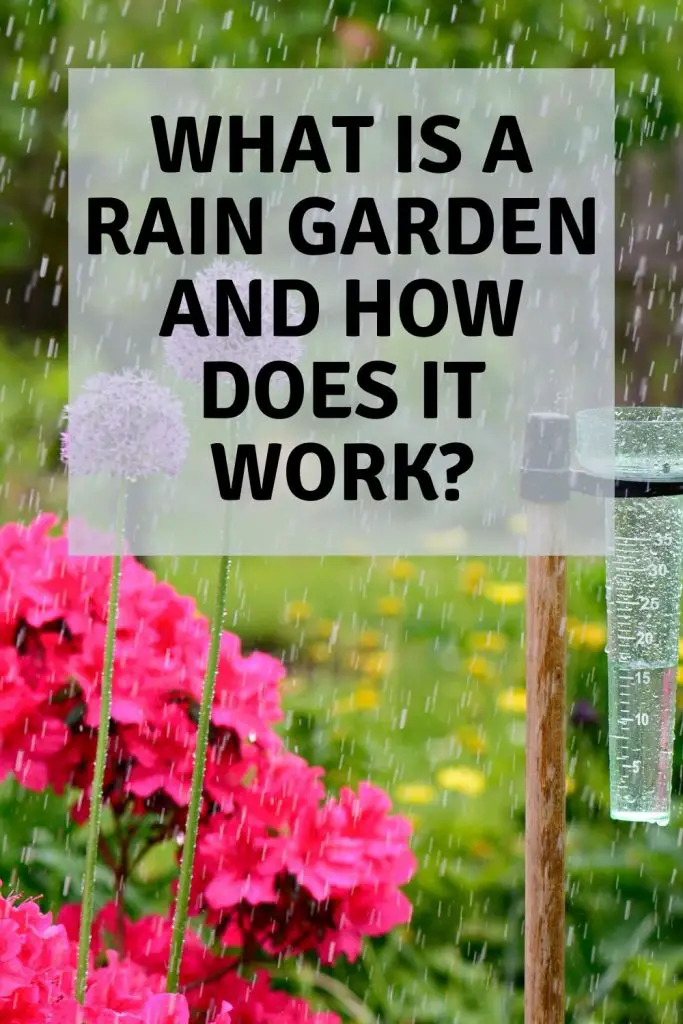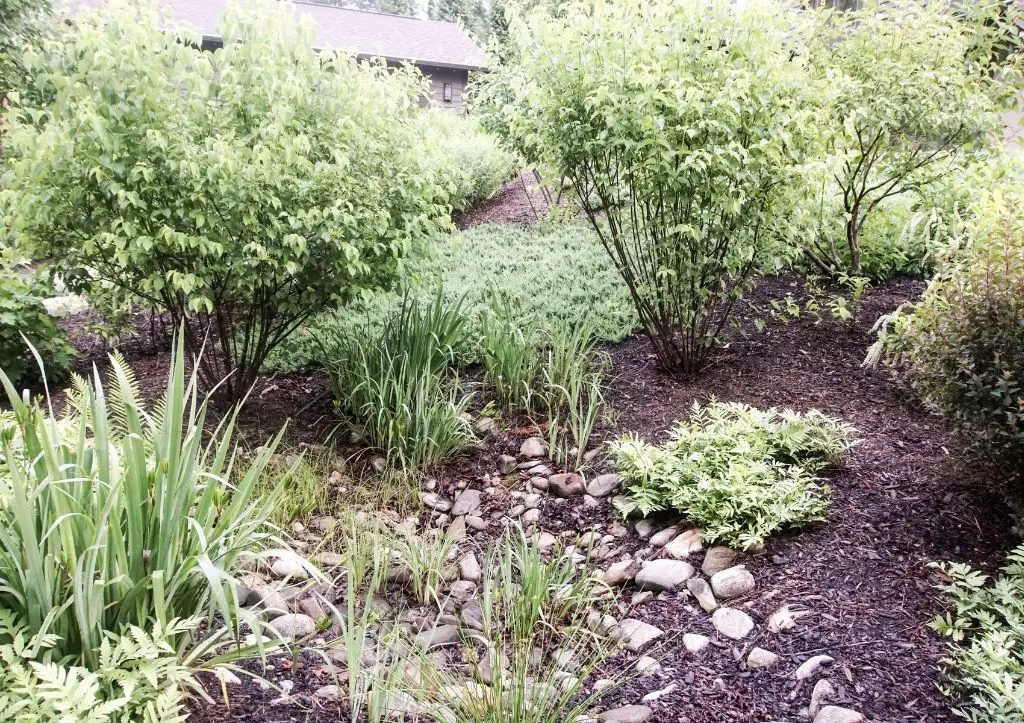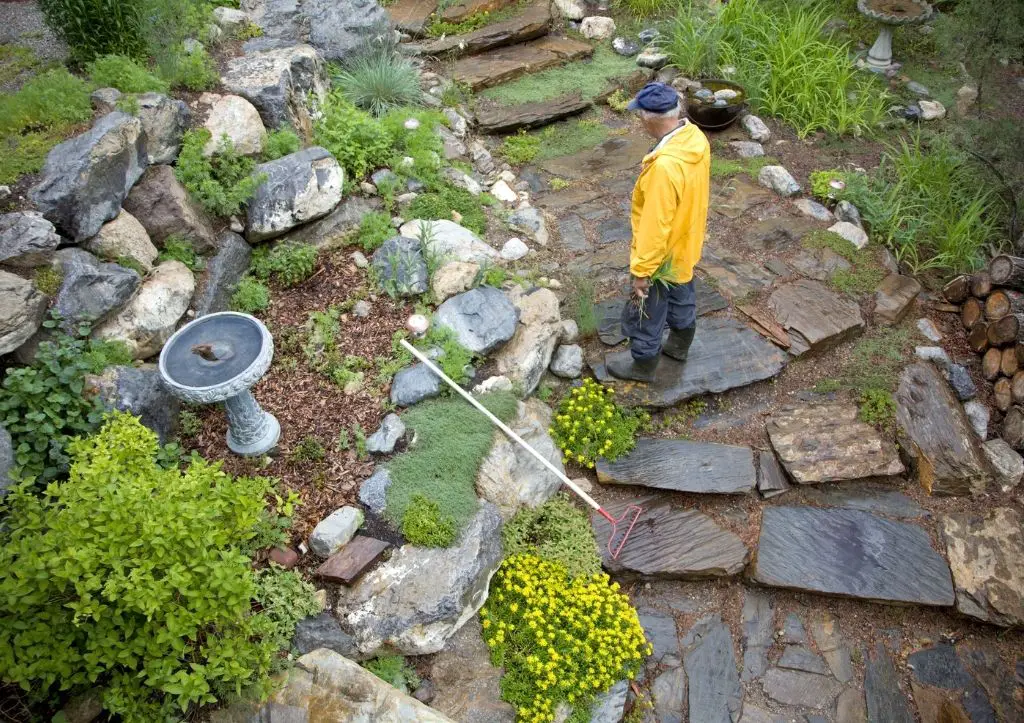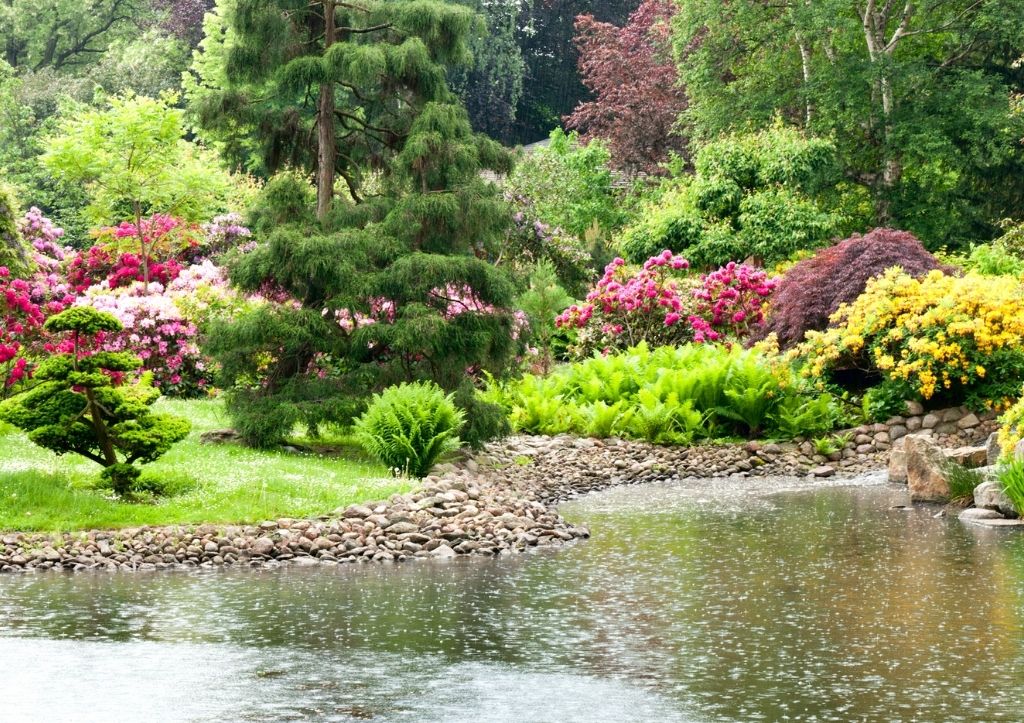As a gardener you may have heard the term ‘rain garden’, particularly if you live in an area that gets lots of wet weather.
But, just what is a rain garden and how do they work?
A rain garden is a garden that is specifically designed to collect and absorb rain water from roofs, driveways, and other hard surfaces. The water then slowly seeps into the ground, instead of running off into storm drains and rivers. This can help to prevent flooding, and it also helps to recharge groundwater supplies.

How do rain gardens work?
Rain gardens are designed to collect and absorb rain water.
There are a few different ways to design a rain garden, but they all have the same goal – to collect and absorb as much rain water as possible.
The most common type of rain garden is a simple depression in the ground that collects runoff from hard surfaces.
You can also create a rain garden by planting native plants in a raised bed. The plants will help to absorb the water and the roots will help to keep the soil in place.
No matter what type of rain garden you choose, it’s important to make sure that the soil is well-drained. The garden should also be located in an area that gets plenty of sun.
Rain gardens are a great way to help prevent flooding and to recharge groundwater supplies. They’re also a great way to add beauty to your garden.
[amazon box=”0760340447″ template=”horizontal”]
Why would you build a rain garden?
There are a few different reasons why you might want to build a rain garden:
– To prevent flooding
– To recharge groundwater supplies
– To add beauty to your garden
– To help the environment
Where is the best location for a rain garden?
The best location for a rain garden depends on the type of rain garden you choose to build.
If you choose to build a simple depression in the ground, the best location is near a downspout or other hard surface that collects runoff.
If you choose to build a raised bed, the best location is in an area that gets plenty of sun and that has well-drained soil.
No matter what type of rain garden you choose, it’s important to make sure that the soil is well-drained.
You should aim to have your rain garden at least 10 feet away from any building foundations and well away from any septic tanks or other sewage storage systems.

How to build a rain garden
Building your own rain garden is a great way to help reduce flooding in your community, and it’s also a great way to get some gardening practice.
Here are a few tips for how to build your own rain garden:
1. Choose a location. The best location for a rain garden is somewhere that gets a lot of sun, but also has good drainage.
2. Choose the right plants. There are a number of different plants that work well in rain gardens, so choose the ones that will best suit your location and climate.
3. Size matters. Make sure to size your rain garden correctly – it should be big enough to collect and absorb all of the rain water that falls on it.
4. Use a rain barrel. A rain barrel is a great way to collect rain water for your garden, and it also helps to keep storm drains from getting clogged.
What plants should you use in a rain garden?
There are a number of different plants that work well in rain gardens, so choose the ones that will best suit your location and climate.
You’ll need plants that can tolerate wet soil as well as dry
Here are a few of our favorites:
– Black-eyed Susan
– Butterfly weed
– Cardinal flower
– Joe Pye weed
– New England aster
Do rain gardens attract mosquitos?
There is a myth that rain gardens attract mosquitos, but this is not actually true.
Mosquitos are attracted to standing water, and a properly-functioning rain garden will not have any standing water.
Can I use a rain garden to water my lawn?
A rain garden is not designed to water your lawn – it’s designed to absorb and collect rain water.
If you want to water your lawn, you should use a sprinkler or irrigation system.

How do I maintain my rain garden?
Maintaining your rain garden is pretty easy – all you need to do is make sure to keep the soil well-drained and to keep the plants healthy.
You may also need to trim back some of the taller plants from time to time.
Final words
A rain garden is a great way to help prevent flooding and to recharge groundwater supplies.
It’s also a great way to add beauty to your garden.
No matter what type of rain garden you choose to build, make sure to choose plants that will thrive in your climate and location.
And be sure to size your rain garden correctly – it should be big enough to collect and absorb all of the rain water that falls on it.
Finally, don’t forget to use a rain barrel to collect rain water for the other plants in your garden and greenhouse.




